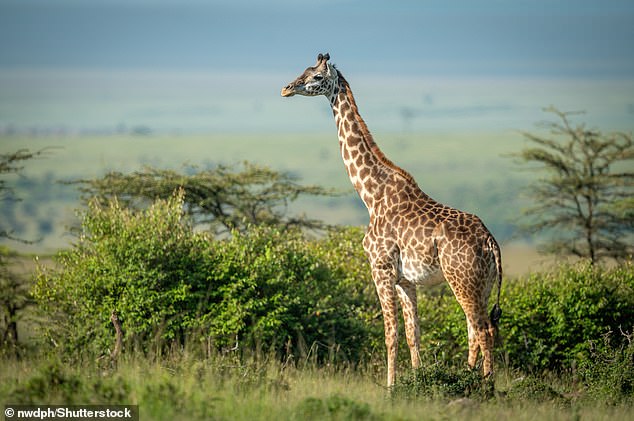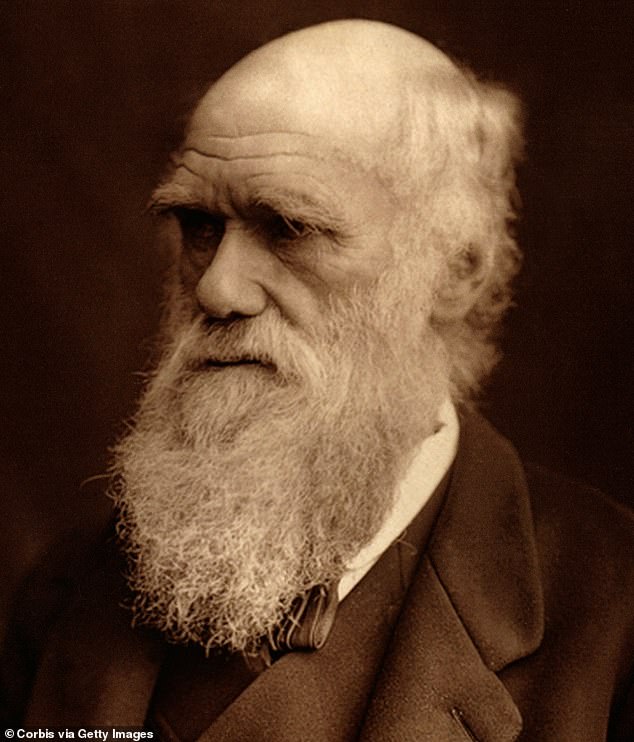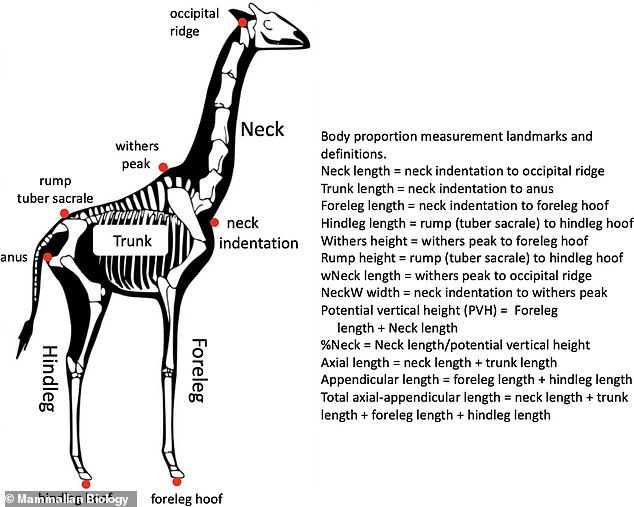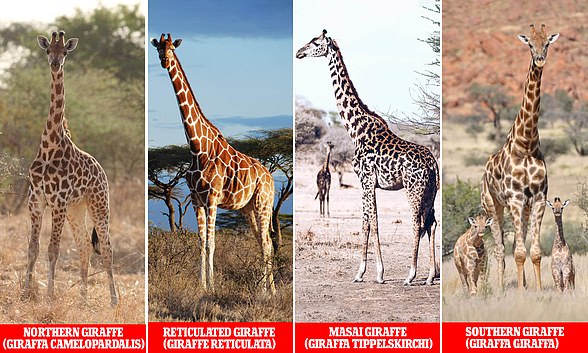Why do giraffes have long necks? Scientists reveal a fascinating new theory
Charles Darwin famously used his ‘survival of the fittest’ theory in the 19th century to explain why giraffes have long necks.
Millions of years ago, giraffes with the longest necks could reach more leaves on trees and survive the competition – before they passed the long-neck trait into their genes, the legendary English naturalist said.
Now scientists in the US are expanding on Darwin’s findings with a new theory – and they think it was women who drove the evolutionary trait.
They found that female giraffes have proportionately longer necks than males – and females’ high nutritional needs during pregnancy and lactation are likely the cause.
Interestingly, female giraffes have a more sloping body shape, while the males are more vertical, which can help increase their love interest.
Although male and female giraffes have the same body proportions at birth, they differ significantly as they reach sexual maturity. Males have a broader neck and longer forelimbs, which can help them win fights against other males and when mating

For the study, researchers collected thousands of photos of captive and wild Masai giraffes (Giraffa tippelskirchi, pictured in the file photo), a species native to East Africa.
The study – which builds on Darwin’s theory rather than asserts it – was led by Douglas Cavener, a professor of biology at Pennsylvania State University.
“Giraffes are picky eaters,” Professor Cavener said.
‘They eat the leaves of only a few tree species, and their longer necks allow them to reach deeper into the trees to grab the leaves that no one else can.
‘When females are four or five years old, they are almost always pregnant and lactating.
“So we think the increased nutritional needs of females drove the evolution of giraffes’ long necks.”
Due to their higher nutritional needs, females need a long neck to reach deep into the trees and get the best leaves, Professor Cavener and colleagues claim.
For the study, researchers collected thousands of photos of captive and wild Masai giraffes (Giraffa tippelskirchi), a species native to East Africa.

In their theories of evolution, naturalists Charles Darwin (pictured) and Frenchman Jean Baptiste Lamarck said long necks evolved to help giraffes reach leaves high in a tree, avoiding competition with other herbivores.

The team says that females have proportionally longer necks than males (relative to the entire length of the animal).
They found that female, both captive and wild adult giraffes, have proportionately longer necks than males – in proportion to the entire length of the animal.
Females also have proportionately longer ‘torso’ (the main part of their body that does not include legs, neck and head).
Adult males, on the other hand, have longer forelimbs (effective for mounting the female during copulation) and broader necks (which can be attacked by rival males during fights).
According to the experts, men generally grow faster in the first year. Body proportions do not differ significantly until they begin to explore sexual maturity around age three.
A more recent hypothesis called ‘necks for sex’ suggests that the evolution of long necks was driven by competition between males, who wiggle their necks to assert dominance, called neck sparring.
‘Necks-for-sex’ suggests that males with longer and thicker necks have been more successful in competition, leading to reproduction and passing on their genes to offspring.
‘The neck-for-sex hypothesis predicted that men would have a longer neck than women,’ says Professor Cavener.
“And technically they have a longer neck, but everything about men is longer: they’re 30 to 40 percent taller than women.”
The team doesn’t reject the neck-for-sex hypothesis, but if it had an effect, it probably came later.
They write in their study: ‘The initial evolution of the giraffe’s long neck and legs was driven by interspecific competition and the mother’s nutritional needs during gestation and lactation, using natural selection to gain a competitive advantage.
‘Later, the neck mass was further increased due to male-male competition and sexual selection.’
The new study has been published in the journal Mammal biology.

